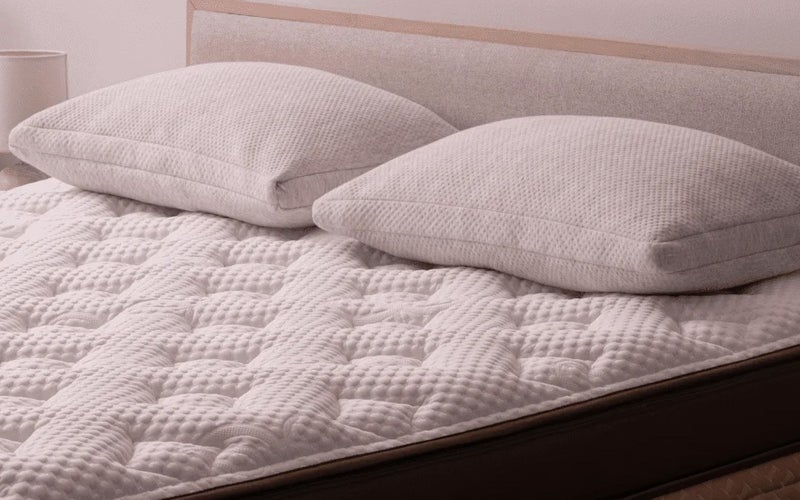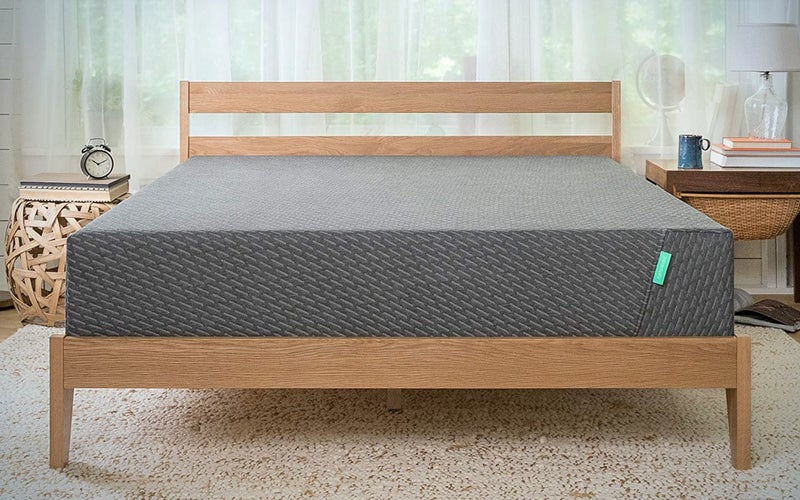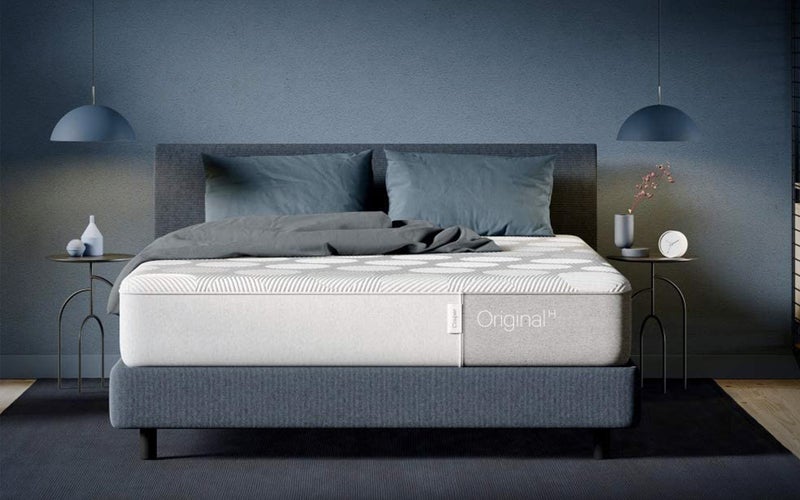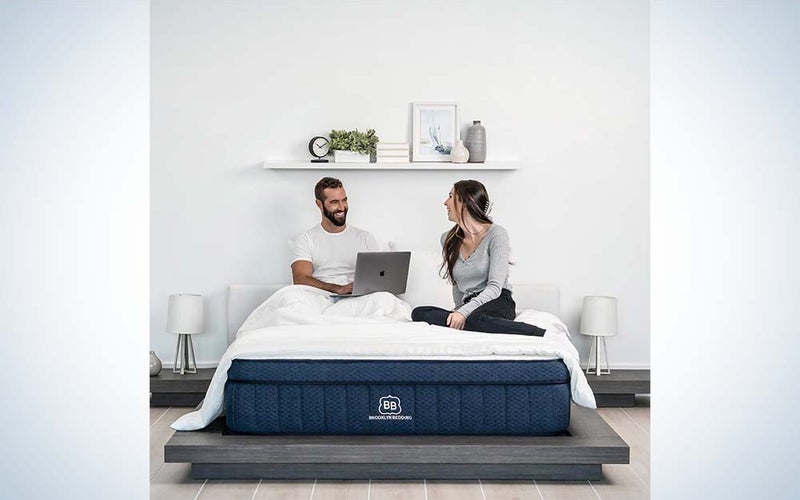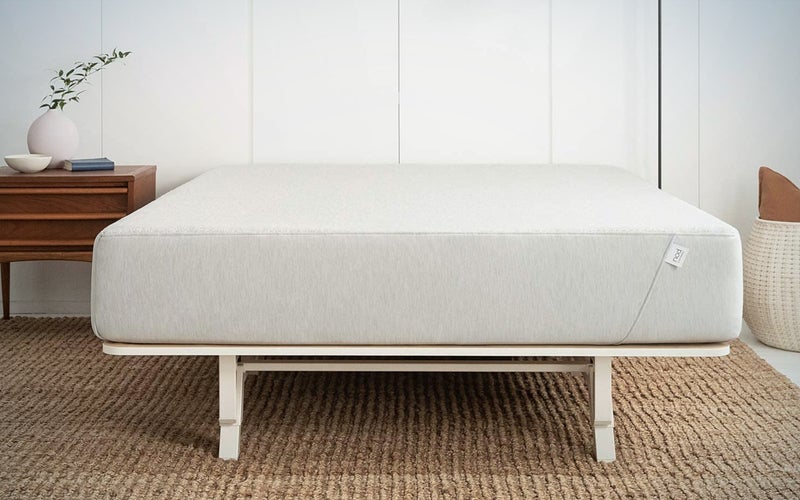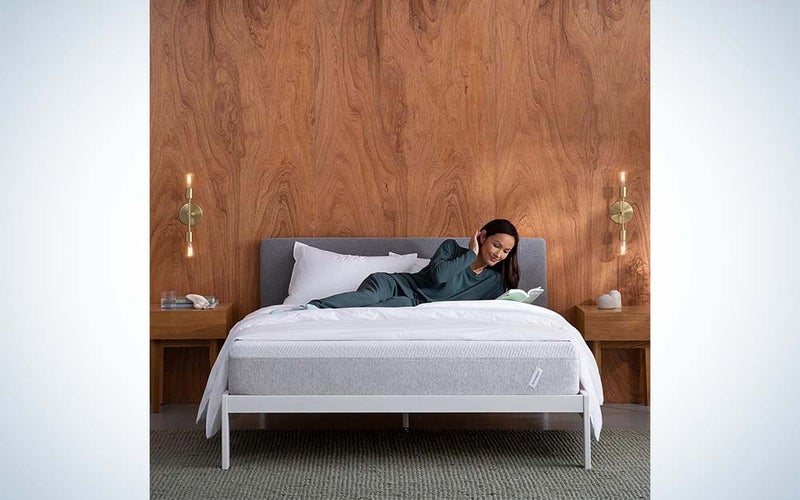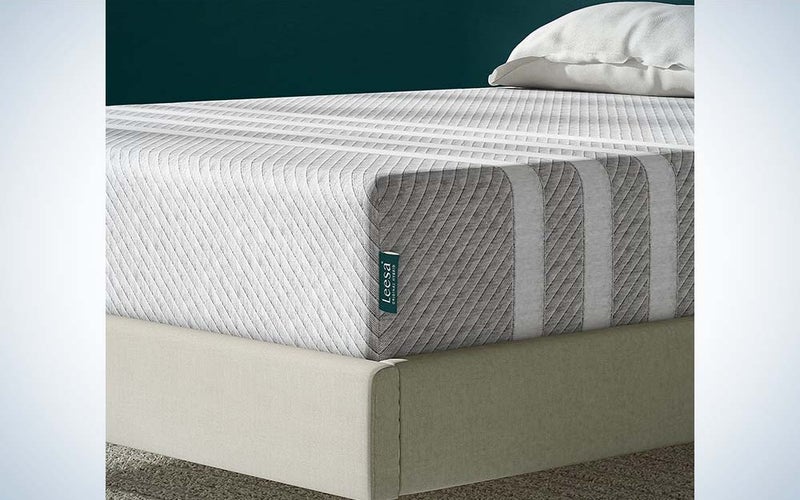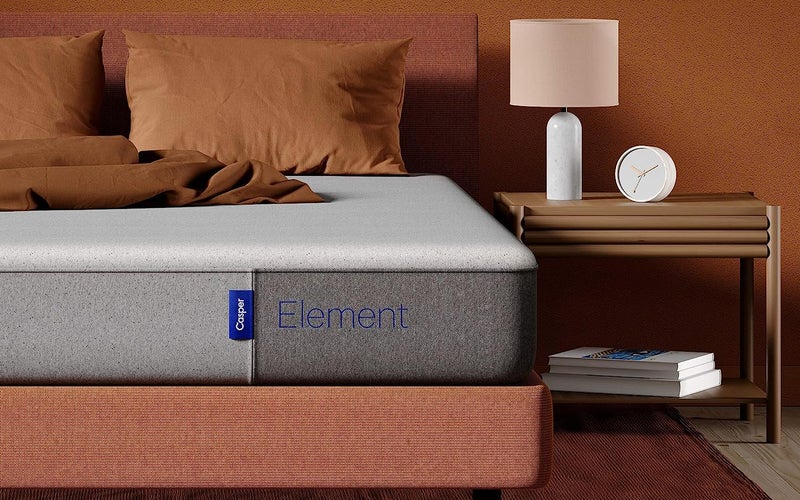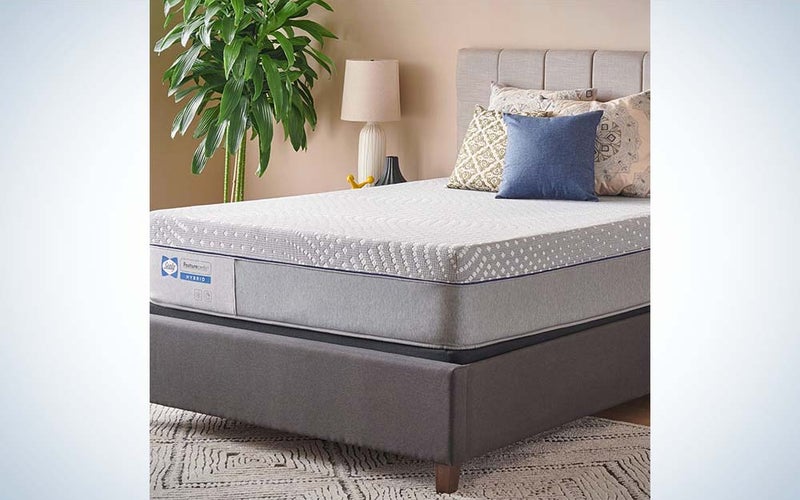We may earn revenue from the products available on this page and participate in affiliate programs. Learn more ›
What better way to start your morning than by showing up well-rested, and what better way to rest than on a new mattress. With new technology and developments in sleep science, we know more about what it takes to get a good night’s sleep. Traditional coil innerspring models have evolved, and modern designs come with foam materials that can literally shape to our bodies. With cooling gels, foam, plush pillow tops, and breathable materials, we can stay cool, relaxed, and comfortable all through the night. Moreover, you’re no longer stuck shopping in stores with pushy salespeople. One of the best mattress can show up at your doorstep once you decide on the best option for you.
- Best overall: Helix Midnight Elite Mattress
- Best memory foam: Tuft & Needle Mint Mattress
- Best hybrid: Casper Original Hybrid Mattress
- Best cooling: Brooklyn Bedding Aurora Luxe Cooling Mattress
- Best for durability: Nod Hybrid by Tuft & Needle
- Best eco-friendly: Tuft & Needle Original Queen Mattress
- Best for back sleepers: Leesa Hybrid 11 Mattress
- Best for stomach sleepers: Casper Sleep Element Mattress
- Best for side sleepers: Sealy Posturepedic Soft Feel Mattress
- Best budget: Zinus Memory Green Mattress
How we chose the best mattresses
While it’s easy to assume that all mattresses offer similar performance, a number of factors affect their functionality. Several years of experience covering home goods and furniture as well as extensive product research went into choosing our final curated selection. We reviewed over 30 mattresses and weighed a number of practical considerations when making our recommendations.
Type: Foam, innerspring, and hybrid mattresses all have their own benefits, so we considered all three types for this guide.
Firmness: There is no perfect mattress firmness level, so we made sure to include plush, medium, and firm options in this guide to suit a variety of sleep preferences.
Thickness: Mattresses range in height from about 5 inches to 20 inches. While thickness doesn’t necessarily relate to quality, most people do find a thicker one to be more comfortable. Taking that into account, we only considered mattresses with heights of 10 inches or more.
Trial period: Since buying a mattress is such a personal decision, many manufacturers offer trial periods for you to test them out to ensure the right fit for you. We gave preference to brands that offered trial periods of 100 nights or more.
Value: Buying a mattress is a major investment that can last a decade or more, so it’s worth it to save up to buy a high-quality model. That being said, we still considered value when making our recommendations and only included products that we considered to be a great price for the quality provided.
Size: In order to fairly compare the prices of all our recommended mattresses, this guide only features details for queen-sized mattresses (which measure 60 by 80 inches), though all models listed are also available in other sizes.
The best mattresses: Reviews & Recommendations
While we can’t always control the stress in our daily lives, we can control the quality and comfort of our nightly rejuvenation by selecting the best mattress for our bodies. The right bed will provide you with optimal support and comfort. Whether you prefer firm support or a plush, soft mattress, you can choose from many options in many price ranges, so we’ve helped narrow it down.
Best overall: Helix Midnight Elite Mattress
Helix
Specs
- Type: Hybrid
- Height: 16 inches
- Firmness: Medium
- Available in: Twin, twin XL, full, queen, king, California king
- Provides 100-night trial: Yes
Pros
- Superior comfort
- Designed with cooling technology
- Made without harmful chemicals
Cons
- Expensive
- Requires deep-pocketed sheets
If you’re looking to upgrade your sleeping experience all-around, consider the award-winning Helix Midnight Elite Mattress. At 16 inches thick, it’s known as the “tallest mattress on the internet.” This hybrid mattress features a quilted top is designed with two layers of microcoils specifically designed for back support and five layers of high-density foam. The Helix also contains proprietary cooling technology that adjusts temperature for each individual user. Plus, you can rest easy knowing that these mattresses are Greenguard Gold-certified for using low amounts of potentially harmful VOCs. And you can test it out for 100 days to make sure it’s right for you.
Best memory foam: Tuft & Needle Mint Mattress
Tuft & Needle
Specs
- Type: Memory foam
- Height: 11.5 inches
- Firmness: Medium
- Available in: Twin, twin XL, full, queen, king, California king
- Provides 100-night trial: Yes
Pros
- Adaptive foam adjusts to the body
- Designed with cooling technology
- Environmentally friendly
- Works with most frames
- Removable cover is machine-washable
Cons
- Not springy
- Not the best for people with larger builds
This memory foam mattress is made with multiple layers of foam to form a strong base, ceramic gel beads for support, and a cooling gel inside the mattress. The top layer uses T&N adaptive foam, which contours to your shape and releases tension in your limbs. What’s more, it is swathed in a breathable cover to help cool the body. And you can rest easy knowing that this model is Greenguard Gold- and CertiPUR-certified, which means it’s free from harmful chemicals. That said, you may miss the springiness of mattress coils and this option isn’t the best for stomach sleepers or people with larger builds.
Best hybrid: Casper Original Hybrid Mattress
Casper
Specs
- Type: Hybrid
- Height: 11 inches
- Firmness: Medium
- Available in: Twin, twin XL, full, queen, king, California king
- Provides 100-night trial: Yes
Pros
- Made with recycled materials
- Ergonomically designed
- Features cooling technology
- Hybrid model features springs and foam
Cons
- Some users found it uncomfortable
- May be hard on the back
Casper is one of the most well-known online mattress retailers and has carved out a niche on the market by creating well-made and affordable products that are consistently well-reviewed. This hybrid Casper mattress uses Zone Support which allows for optimal spinal alignment. On top of that, breathable foam helps to circulate air and release heat, so you don’t get too hot at night. It’s also made in part from up to 121 recycled bottles. The final touch? Innerspring coils add lift, bounce, and border support to the base.
Best cooling: Brooklyn Bedding Aurora Luxe Cooling Mattress
Brooklyn Bedding
Specs
- Type: Hybrid
- Height: 13.25 inches
- Firmness: Can choose between soft, medium, and firm
- Available in: Twin, twin XL, full, queen, king, California king, split California king, short queen, RV king, RV bunk
- Provides 100-night trial: Allows for 120-day trial
Pros
- Designed with cooling fibers that absorb body heat
- Available in soft, medium, or firm
- Makes mattresses for RVs
Cons
- Prominent logo
- Mattress topper may buckle
Not going to be satified with any old mattress? Brooklyn Bedding provides more options to customize your mattress than most companies. The Arizona-based company allows customers to choose between soft, medium, and firm mattresses. And in addition to the usual lineup from twin through California king, Brooklyn also makes mattresses for RVs.
But what sets the Aurora Luxe mattress apart is its cooling technology. The mattress features a cover made with cooling fibers and foam that absorbs body heat. The fibers also allow for plenty of airflow. And the hybrid model is made with individually encased coils that provide support, while foam layers help cushion the body for a satisfying night’s sleep.
Best for durability: Nod Hybrid by Tuft & Needle
Tuft & Needle
Specs
- Type: Hybrid
- Height: 10 inches
- Firmness: Firm
- Available in: Twin, twin XL, full, queen, king, California king
- Provides 100-night trial: Yes
Pros
- Provides firm support
- Smaller footprint
- Less expensive
Cons
- Some users found it didn’t help back pain
- Returns can be challenging
This Tuft & Needle mattress offers a hybrid construction, with layers of adaptive foam, slow recovery foam, and a layer of pocket coils with a foam base. It’s topped with a stay-cool material to prevent the heat that is associated with some foam mattresses. The hybrid style allows for the bounce and structure of traditional models combined with the muscle-relaxing comfort of modern memory foam.
Best eco-friendly: Tuft & Needle Original Queen Mattress
Tuft & Needle
Specs
- Type: Memory foam
- Height: 9.5 inches
- Firmness: Firm
- Available in: Twin, twin XL, full, queen, king, California king
- Provides 100-night trial: Yes
Pros
- Relieves pressure
- Foam is infused with cooling gel
- Features adaptive, high-density foam
Cons
- Foam mattresses require time to fully expand
- May have a chemical smell when delivered
While traditional foam mattresses caused sleepers to sink into the material, this pick from Tuft & Needle uses an adaptive foam that’s designed to provide a firm level of support without making you feel trapped.
The brand’s proprietary foam features an open-cell structure that adapts to your body position as you sleep and is infused with graphite and gel beads to make the material more breathable and provide a cooling effect. The materials used are certified by CertiPUR-US as being free of harmful chemicals.
With a medium firmness level, this mattress should be suitable for most sleepers, but back sleepers will particularly appreciate this level of support. Tuft & Needle offers a 100-night trial period in order to make sure the mattress is right for you. According to the manufacturer, 95 percent of buyers keep their mattresses after the trial period ends. Like most foam mattresses, this model needs up to 72 hours to expand after it’s delivered.
Best for back sleepers: Leesa Hybrid 11 Mattress
Leesa
Specs
- Type: Hybrid
- Height: 11 inches
- Firmness: Medium
- Available in: Twin, twin XL, full, queen, king, California king
- Provides 100-night trial: Yes
Pros
- Hybrid design featuring pocket coils and foam
- Features a ventilated comfort layer
- Environmentally friendly
Cons
- Because it comes rolled in a box, it will need time to expand
- Some users say you can feel the springs
Back sleepers do best with a medium level of firmness that keeps their spines properly aligned when sleeping while also providing cushioning at key pressure points like the shoulders and hips. This hybrid model from Leesa features pocket springs covered in a top layer made from cozy memory foam. The comfort layer on top of the memory foam includes ventilation holes to prevent you from overheating as you sleep.
Innerspring mattresses are known for having higher levels of motion transfer than foam mattresses, meaning that if your partner gets up in the middle of the night, you’ll feel the mattress shift. This model, however, includes over 1,000 individually wrapped springs to reduce motion transfer. The coils span the entire mattress so you won’t experience issues with the edges or corners sagging.
While medium-firm mattresses are ideal for back sleepers, they’re also an excellent all-around pick if your mattress needs to accommodate various sleep positions. And in terms of materials, this mattress is CertiPUR-US-certified.
Best for stomach sleepers: Casper Sleep Element Mattress
Casper
Specs
- Type: Foam
- Height: 10 inches
- Firmness: Firm
- Available in: Twin, twin XL, full, queen, king, California king
- Provides 100-night trial: Yes
Pros
- Firm support for stomach sleepers
- Perforated foam layer for air circulation
- Made with sustainable materials
Cons
- Foam mattresses requires up to 72 hours to fully expand
Casper’s Element mattress is a budget pick that’s constructed from three different types of foam and provides a firm support level. Stomach sleepers do best with a high level of support to alleviate the pressure placed on their chests, shoulders, knees, and hips.
The top layer features a comfortable memory foam that relieves pressure by contouring to your body. The middle layer is made from AirScape, a perforated foam that provides air circulation that’s beneficial for hot sleepers. The base layer is extra-firm and durable to provide the maximum level of support. As an added bonus, each mattress is made using eco-friendly textiles and is constructed with 121 recycled plastic bottles.
Best for side sleepers: Sealy Posturepedic Soft Feel Mattress
Sealy
Specs
- Type: Hybrid
- Height: 13 inches
- Firmness: Plush (soft); also available in medium and firm
- Available in: Twin, twin XL, full, queen, king, split king, California king
- Provides 100-night trial: Yes
Pros
- Targeted support in the center layer
- Cooling foam is great for hot sleepers
- A moisture-wicking cover helps you stay dry
- 13-inch thickness
Cons
- Heavy
- More expensive than some models
A plush mattress is best for side sleepers because they need cushioning on their pressure points. This model from Sealy combines an innerspring system with a gel foam top layer for a perfect balance of 13 inches of comfort and support. One unique feature of this model is that it has targeted reinforcement in the middle third of the mattress, which is where the heaviest part of your body needs support.
The 660 coils are designed to prevent motion transfer, and the brand’s Stable Edge Pro coil system ensures the edges of the mattress don’t sag. The Euro Top cushion layer includes SealyCool Air Gel Foam, which adds breathability, making sleeping comfortable no matter the temperature. Each purchase includes a moisture-wicking protective cover that will improve the mattress’s longevity. While this mattress is soft, the same one is also available in medium and firm.
Best budget: Zinus Memory Green Mattress
Zinus
Specs
- Type: Memory foam
- Height: 12 inches
- Firmness: Plush (soft)
- Available in: Narrow twin, twin, twin XL, full, short queen, queen, king, California king
- Provides 100-day trial: No, provides 30-day trial
Pros
- Affordable
- Made without dangerous chemicals
- Can support up to 500 pounds
Cons
- Trial period shorter than most
Not looking to spend a lot? Typically you can find deals on foam mattresses; prices get lower as the size and thickness get smaller. The Zinus Memory Green Mattress, for example, is full size and measures 12 inches thick for under $400. This budget pick is made with three layers of foam to conform to the body, allow for airflow, and provide base support. The makers compress and ship it in a small box that expands within 72 hours of opening the package. And it’s also CertiPUR-US-certified.
Things to consider when shopping for the best mattresses
The mattress marketplace is full of options. With hundreds of models and manufacturers, finding the right choice can feel overwhelming. You can pick from traditional and new materials and price points that range from reasonable to a splurge. Also, consider what type of comfort and support you want. While you should ideally try the model out in person, many online purchases come with free trials and easy returns. Finally, you should understand the construction and materials used. You want your mattress to be durable and retain its shape for many years.
Innerspring vs. memory foam
First, you should understand the difference between innerspring vs. memory foam. Traditional mattresses are designed with what is called innerspring construction, which is made with steel coils arranged in various configurations. While some manufacturers advertise that the more coils the better the support—and therefore the better the quality—it’s important to consider the gauge of metal used in these springs. Thinner-gauge metal may not be as durable as a thicker gauge. Some are designed with a Bonnell-style coil or hourglass shape, a continuous wire coil, or individually pocketed springs. You can find highly rated mattresses made with all of these coil styles.
Why does it matter? Coil construction is responsible for the bounciness. The top of the innerspring construction mattresses can include special layers of cushioning, such as a pillow top layer or infused gel. Shifting positions tends to be easy with innerspring mattresses due to the bouncy quality. Foam layers and plush pillow tops added to the top help suppress the bounce by absorbing some of the vibrations.
Qualities of memory foam
Many mattresses today are completely constructed out of foam. The memory foam mattress was invented in the 1960s, designed to soften when you lie on it and mold to your body. Once you get up, it springs back to its original shape. The top models use foam to relieve pressure in areas of the body that may hold tension. This malleable material conforms to the body and is made with good motion isolation, which is convenient for couples. What’s more, the cost of these varies from budget to high end. That said, some negative attributes associated with some foam construction mattresses include an initial “off-gas” chemical smell that will dissipate after a few days of being set up and lack of bounce. The foam can also trap body heat.
Though many manufacturers use polyurethane to create their foam layers, others use latex as well. Some include both (so be wary if you have sensitivities). Specific foams offer cooling, support, and pressure relief. Additional varieties include high-density polyfoam, high-resiliency polyfoam, open-cell memory foam, gel memory foam, and varieties of latex foam.
Hybrid mattresses
Hybrid mattresses are made with both traditional construction (metal innerspring coil) and modern materials like foams and gels. They’re great for people who want the best of both styles of mattress. A hybrid has the sturdy support of the innerspring coil, better edge support, and durability along with the signature bounce. However, hybrids also incorporate the many benefits of new technology. Modern foam options offer superior comfort with the ability to mold to your body and relieve pressure in joints and muscles. Adding layers of foam or gel on top of the traditional base provides support and flexibility.
One of the complaints associated with foam-style mattresses is that it can be difficult getting in and out of bed. Sometimes the softness (lack of bounce) and molding quality can make the edge of the bed seemingly collapse when you sit on it. With an innerspring coil, you get some edge support and bounce that makes sitting on bed and getting out of bed easier.
Sleep position
Side sleepers are best served by a well-cushioned mattress because their hips and shoulders need to rest comfortably on the mattress. Back sleepers generally prefer a medium-firm option because they require plenty of spine support as well as cushioning for pressure points like the hips, lower back, and shoulders. Stomach sleepers should consider a firm mattress in order to provide support to the chest, stomach, knees, and hips. All-foam picks probably aren’t the best fit for stomach sleepers because they may cause you to sink in and put strain on your lower back.
Pain relief
The big question: Will it help you get a good night’s sleep? They will ensure that you wake up without any additional aches and pains and feel truly rested. The best mattress for back pain relief is a combination of flexibility and durability. It will conform to your body and provide full-body relief, but be supportive enough to not sink or sag.
People seeking pain relief should also consider temperature. Cooling fabrics, gels, and breathable fabrics will allow for an ideal sleeping experience with plenty of airflow. Look for ergonomic designs such as gel pads that help to align the spine, provide softer support under the shoulders, and firmer support around the hips and lower back.
Durability
Anyone who has spent a night tossing and turning in a friend’s basement on their ancient, broken mattress understands the importance of durability. The more durable the materials and construction, the more comfortable nights you will enjoy. Better quality spring construction will provide years of solid but flexible support. Look for foam that can withstand years of conforming to the body while remaining adaptable enough to return to its original shape after you get up.
The amount of wear and tear put on the bed is just one factor that affects its lifespan. A rarely used mattress in a seasonal beach house will last longer than one a child jumps on every night. Laboratories test this durability with simulations of normal use and offer an idea of how well they will hold up in time. The longer a mattress is able to retain its original shape, height, firmness, and side/back support, the more durable it is. A mattress that can withstand eight or more years of wear and tear earns a high rating of durability.
FAQs
Q: How much does a mattress cost?
The cost of a mattress ranges from about $3,000 for a premium pick like the Helix Midnight Elite Mattress to just over $300 for the budget-friendly Zinus Memory Green Mattress. In addition to cost, it’s worthwhile to consider the likely longevity of your purchase.
Q: How do you know when it’s time to replace your mattress?
Generally speaking, you should replace a mattress every 6 to 8 years. That being said, there’s no need to replace one that’s still comfortable and supportive. You’ll know it’s time to start shopping for a replacement if it begins to sag or you frequently wake up with back pain.
Q: Do you need a box spring?
Box springs were necessary when mattresses were thinner and less supportive, but most modern mattresses do not require a box spring and are designed to be used on platform-style bed frames.
Q: Is it better to sleep on a hard or soft mattress?
Our recommendations cover a variety of types and styles to best suit your needs. The Tuft & Needle Mint Mattress is one of our top picks because of its adaptive foam construction. Our recommended choice for those on a budget is the Zinus 10-Inch Memory Foam Mattress for its supportive base and comfortable memory foam layer.
Final thoughts on the best mattresses
- Best overall: Helix Midnight Elite Mattress
- Best memory foam: Tuft & Needle Mint Mattress
- Best hybrid: Casper Original Hybrid Mattress
- Best cooling: Brooklyn Bedding Aurora Luxe Cooling Mattress
- Best for durability: Nod Hybrid by Tuft & Needle
- Best eco-friendly: Tuft & Needle Original Queen Mattress
- Best for back pain: Casper Sleep Snow Mattress
- Best for back sleepers: Leesa Hybrid 11 Mattress
- Best for stomach sleepers: Casper Sleep Element Mattress
- Best for side sleepers: Sealy Posturepedic Soft Feel Mattress
- Best budget: Zinus Memory Green Mattress
Buying a mattress doesn’t have to involve hours of in-person shopping and haggling with salespeople. Now you can search hundreds of styles online and order them to your doorstep without hassle. Understanding the needs of your body, as well as the materials and construction, will help you pick a brand and model. Then find the best mattress and look forward to restful nights and serenity ahead.
Why trust us
Popular Science started writing about technology more than 150 years ago. There was no such thing as “gadget writing” when we published our first issue in 1872, but if there was, our mission to demystify the world of innovation for everyday readers means we would have been all over it. Here in the present, PopSci is fully committed to helping readers navigate the increasingly intimidating array of devices on the market right now.
Our writers and editors have combined decades of experience covering and reviewing consumer electronics. We each have our own obsessive specialties—from high-end audio to video games to cameras and beyond—but when we’re reviewing devices outside of our immediate wheelhouses, we do our best to seek out trustworthy voices and opinions to help guide people to the very best recommendations. We know we don’t know everything, but we’re excited to live through the analysis paralysis that internet shopping can spur so readers don’t have to.

